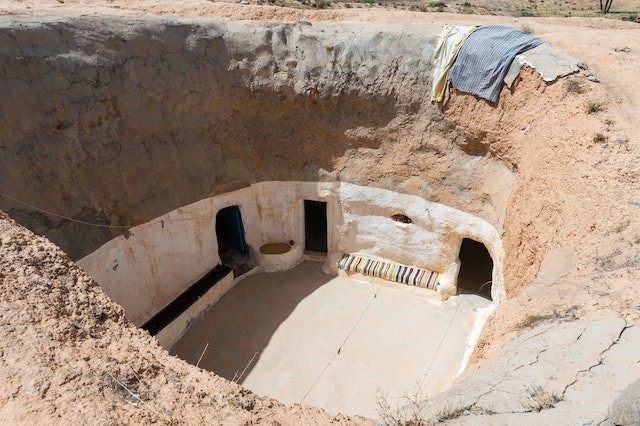
The temperature on Earth has continued to rise. July was even named the hottest month. Some are already exploring a potential solution to the scorching weather, and living underground is reportedly among the options.
Is Living Underground to Survive Climate Crisis Possible?
It could be time to consider adaptations like underground living as we prepare to live on a scorching planet with more frequent extreme weather occurrences. Temperatures can stay much more consistently steady without needing energy-intensive air conditioning or heating when surrounded by masses of rock and soil that absorb and hold heat.
Not only is it feasible to live underground, but people (and animals, too!) have done so for a very long time.
Sixty percent of the people in Coober Pedy, South Australia, an opal mining town, take advantage of this impact by living underground.
Coober Pedy's name is derived from the Aboriginal word kupa piti, which means "white man in a hole."
Their "dugouts" maintain a constant temperature of 23 °C (73 °F) throughout the scorching 52 °C (126 °F) summers and chilly two °C (36 °F) winters. Without this all-natural rock shelter, many people's summer air conditioning costs would be unaffordable.
Although only intermittently throughout millions of years, humans have been living underground. Our cave-painting ancestors left handprints and hunting scenes behind. Many residents in Tunisia still reside in what The Atlantic refers to as "crater-like homes," which feature chambers dug into the ground and a central patio open to the sky. And in the Australian "dugout" town of Coober Pedy, residents pray in an underground cathedral while guests rest in hotel rooms covered in silt.
Even today, underground construction is still going on. Many northern communities maintain underground tunnel systems, some of which are so complex as to be dubbed "shadow cities," to withstand the harsh winters. Under Beijing's congested metropolitan arteries, a million people live in nuclear fallout shelters. As sprawl and high-rise boundaries become obvious, other dense metropolitan locations, like London and Mexico City, are also attempting to expand.
However, even "cavemen" went outside. It would be unprecedented to the point of being almost inconceivable to live fully underground. According to researchers, humans could create convincing and surprisingly healthy-mole people with good design and psychological support. Building earthscrapers instead of skyscrapers could be a solution to extreme temperatures on the planet.
How to Design an Underground Home for Extreme Weather
Homes must be at least 2.5 meters below the surface to avoid the roof collapsing. Caves do occasionally occur despite this rule.
The locals used pickaxes and explosives to make holes in the Earth in the 1960s and 1970s. They still occasionally perform the task by hand, but today they use industrial excavating tools. The sandstone and siltstone are so soft that they can be scraped away with a penknife, so cutting out substantial rock chunks doesn't take long.
People need to feel secure and safe in underground spaces like they are connected to the surface world by having windows that let in natural light and excellent ventilation.
RELATED ARTICLE: 1,600-year-old Roman Dodecahedron Unearthed in Belgium: What Were Those Ancient Objects Used For?
Check out more news and information on Archaeology in Science Times.











